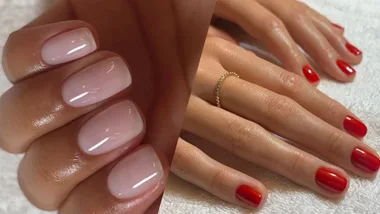Regardless of your skin type or age – one of the perks of being a living, breathing human being is dealing with our ever-changing complexions. From red skin, rashes and red bumps; breakouts to acne; scaly skin to rosacea there’s no shortage of common skin conditions that affect us all. Good news: our skin is very good at giving us an insight into our overall health and wellbeing. So, it’s important to listen to your body and your skin.
Yet, we get it, sometimes you just want to know what’s up with those little red bumps and figure out how to make them go away. So, to prevent you from attacking your skin with the wrong formulas, we’ve created a guide to the most common causes of red spots and the best treatment options for each.
Acne
The most common cause of red spots or pimples is, arguably, acne.
“While acne has long been thought to affect only teenagers, we’re finding that adult women are breaking out more than ever, thanks to hormonal changes,” says Joshua Zeichner, M.D., the director of cosmetic and clinical research in dermatology at Mount Sinai Hospital in NYC told marie claire.
To put it simply acne is a skin condition that occurs when your hair follicles become plugged with oil and dead skin cells. It often causes whiteheads, blackheads or pimples, and usually appears on the face, forehead, chest, upper back and shoulders.
While hormonal acne can be a tricky one to tackle – and, a lifelong battle for some women – your skin care routine can be one of your greatest weapons in the quest to nix acne for good. Look for ingredients such as AHAs and BHAs which reduce the oiliness of the skin, unblock pores and/or reduce skin inflammation.
Psoriasis
Joshua Zeichner, a New York City-based dermatologist, explains it in the simplest terms. “Psoriasis is a condition in which the immune system gets angry at the skin, leading to red, scaly plaques.” Usually, you’ll see these plaques on the elbows and knees, but psoriasis can appear anywhere, including the scalp, lower back, nails, and even the genitals.
Psoriasis is a skin condition that attacks your immune system by messing up the life cycle of normal skin cells. Psoriasis causes cells to build up rapidly on the surface of the skin – these become red, itchy and sometimes painful. While the signs and symptoms are different for everyone – depending on the part of the body and severity – cracked, dry skin that may bleed and papules or red patches are common with psoriasis.
“For mild cases, skin care is important,” Goldenberg says. “I usually recommend [full-body] moisturizers, [and] topical steroids are also useful for itching and inflammation.”
Other topical options for mild cases include cortisones and vitamin D creams, Zeichner says. “More severe cases may require systemic medications like pills or shots to keep the inflammation calm.”
Contact dermatitis
Contact dermatitis causes red, itchy skin and is a side effect of an allergic reaction – as the name suggests, it’s caused by direct contact. Grass, dust and jewellery can cause a flare-up of contact dermatitis. The best way to treat contact dermatitis is with antihistamines and by avoiding the allergen when possible. These red patches are also called papules which is just a term that means red, raised skin.
While these irritations typically clear up on their own, you should see a doctor if the rash is so uncomfortable that you are losing sleep or are distracted from your daily activities.
Keratosis Pilaris
Keratosis Pilaris is a common type of skin condition that causes dry, rough patches and tiny bumps, usually on the upper arms, thighs, cheeks or buttocks. Keratosis pilaris does not or cause itchy skin and, dermatologists agree are generally harmless.
As many as 40 per cent of adults are affected by keratosis pilaris – it’s caused by a buildup of excess keratin in the skin follicle, blocking the pore. Some people refer to keratosis pilaris as chicken skin, since it can feel rough like sandpaper or resemble goosebumps.
Using a salicylic acid body wash is your first line of defence and will slough unclog pores. Creams which contain vitamin A – or retinol – work by promoting cell turnover and can also be used to keep those red bumps at bay.
Heat Rash
“After exposure to heat or sweat, the skin can break out into small, red bumps known as heat rash,” explains Dr Nazarian. “Heat rash is usually found in areas with lots of sweat glands, like the back or chest, though it can really occur anywhere.”
Avoiding overheating may be all you need to do for mild heat rash. Once the skin is cool, heat rash tends to clear quickly. The application of a topical steroid cream will also provide relief in more serve cases.










